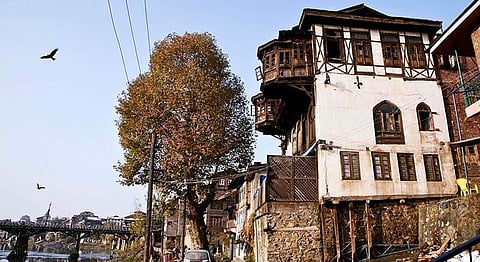
- HOMEGROWN WORLD
- #HGCREATORS
- #HGEXPLORE
- #HGVOICES
- #HGSHOP
- CAREERS
- ABOUT US
- CONTACT US

اگر فردوس بر روے زمین است همین است و همین است و همین است
“If there is a paradise on earth,
It is here, it is here, it is here”
As clichéd as the above couplet might seem to some, in the context of Kashmir and its many-mirrored portrayal, it’s a refreshing description, to say the least. Between abundant flora and fauna, the crystal water of the Dal lake, fresh air and snow-capped mountains - paradise could truly be here. One darkness in particular, however, has set in slowly, claiming larger and larger chunks of this paradise for itself since 1989. It was in this year that an armed resistance in the Kashmiri valley started to drive out the Kashmiri Pandits from their heavenly existence. Some call it a ‘voluntary migration’, others a forced exile; the politically correct term now is ‘an exodus.’
It’s a paradise lost to these Pandits, who began to leave their home in large numbers in the 1990s, following threats from radical Islamic militants. January 19, 1990, is a day most haunting to these refugees. Several mosques declared that the Kashmiri Pandits were undesirable kafirs, while Kashmiri Muslims took to the streets chanting vicious anti-Hindu slogans, sermons and revolutionary songs. The Pandits homes were identified and targeted; given the option to flee or convert to Islam, if not, face death. A once peacefully-heterogeneous community was now crumbling.
As a third-party outsider, it’s not easy to accurately put into words the experiences of the Pandits but as is the case with most such political upheavals the world over, many of the victims/ exiles have taken it upon themselves to tell their own stories, through activism and art. It’s a journey to one’s own past; to recreate an identity and sense of self that’s been fractured by violence and displacement. Artist Veer Munshi, who was among those who left Kashmir in the 1990s, took this very journey when he travelled back to his home in Srinagar, over a decade after his departure. “In 2008, I gathered the courage to visit my ancestral home in Srinagar, which I knew was burnt down. I saw the rubble. It was a difficult moment for me,” he recounted in an interview with Hindustan Times.
Munshi began with photographing the houses comprising his neighbourhood. In time, he moved through the city and on to neighbouring villages. Taking photographs over the years, they were then compiled, becoming a photo-series titled ‘Pandit Houses.’ Recognizing several of the buildings for what they once were; now empty and aquisitioned by dust, pigeons, squatters and even military men.
His photographs show us large wooden houses, half burnt down and in ruins; once beautiful architecture, now vacant and hollow, the ghosts of Kashmir's past echo through the images. Seemingly ordinary, demolished and abandoned buildings; if walls could tell stories, their’s would be racked with fear and sorrow.
Normally, paint to canvas is Munshi’s chosen artistic medium but for this project he took to photography, because he felt it was more direct. An artists subjectivity seeps through into their paintings, leaving things open to interpretation and manipulation. Photographs, according to him, would be “unembellished shots that allowed the house to tell its own story as a stark skeletal reminder of the life that once thrived in Srinagar (Hindustan Times).”
“’Pandit Houses’ is stark, plain-spoken, without embellishment. There is no annotative manipulation, no theatricality, no melodrama. There they stand, in our line of sight: ruins, monuments, memorials. This is testimony to the unforgiving march of history, which takes no prisoners,” stated Ranjit Hoskote, the curator of the exhibition ‘Shrapnel,’ in which ‘Pandit Houses’ was displayed in 2009.
The exhibition was of Munshi’s work - the photo-series, a video film and paintings, which portray broken memories and the chaos in Kashmir, that haunts him, and several other exiles like him who are searching for an irrecoverable origin, a place where they are now tourists and visitors. The images were also a part of an exhibition, titled ‘Kashmir: Insider/Outsider,’ along with work of photographer Amit Mehra. Munshi provided the ‘insider’ view, being an exiled native, and Verma the ‘outsider’ being from Delhi. The work of the two juxtapose different perspectives regarding Kashmir, the beauty and violence that once was, and that which still exists today.
A community in shambles, the exodus will always be a part of their personal story, and of Kashmirs history. A story which Munshi has tried to tell, and understand himself, through paintings, videos and photographs. It’s a sad visual narrative, to say the least, with an overwhelming sadness and sense of loss; of people forced to flee, leaving behind their homes and their identity. These houses aren’t seen much by people outside the state, tourists only want to visit the popular sites. They stand like relics in a memorial ground for what seems like a bygone era, but they speak of a conflict that still exists today.
Scroll down to see more captivating images from Veer Munshi’s ‘Pandit Houses’ photo-series.
All Images courtesy of Veer Munshi | Sakshi Gallery
If you liked this article we suggest you read:
